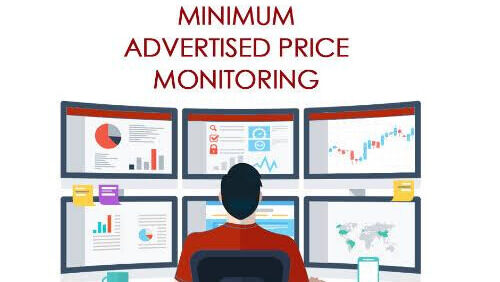Minimum Advertised Price (MAP) policies are a crucial aspect of the e-commerce and retail landscape, playing a significant role in maintaining brand value and market stability. These policies are agreements between suppliers and retailers that set the lowest price at which a product can be advertised. The importance of MAP policies lies in their ability to protect brand reputation, prevent price wars, and ensure fair competition among retailers.
Understanding MAP Policies
Minimum Advertised Price (MAP) policies are guidelines set by manufacturers or brands dictating the lowest price at which a product can be advertised for sale. Crucially, MAP policies apply to advertised prices, not the actual sale price, which means retailers can often sell products at lower prices, but cannot display or advertise these prices publicly.
Why MAP Monitoring is Crucial for Manufacturers and Brands
Maintaining Brand Value and Image:
Consistent Pricing: MAP policies help maintain consistent pricing across different retail channels, which is essential for preserving the perceived value of a brand.
Brand Perception: When products are advertised below the MAP, it can create a perception of low quality or value, which can harm the brand’s image.
Protecting Relationships with Retailers:
Fair Competition: MAP monitoring ensures that all retailers adhere to the same pricing rules, creating a level playing field and preventing unfair competition.
Retailer Confidence: Retailers are more likely to invest in brands that enforce MAP policies, as it assures them that their investments in inventory won’t be undermined by price undercutting.
Avoiding Price Wars:
MAP policies help prevent price wars, which can be detrimental to both manufacturers and retailers, leading to reduced profit margins and potentially harming the industry as a whole.
Implementing MAP Monitoring
Navigating MAP Compliance: Best Practices and Strategies
Ensuring compliance with Minimum Advertised Price (MAP) policies is critical for maintaining brand integrity and retailer relationships. Here are some best practices and strategies for navigating MAP compliance effectively:
Best Practices for Ensuring Compliance with MAP Policies
Clear and Consistent Policy Design:
Make your MAP policy specific, clear, and easy to understand. Define what constitutes a violation and the consequences. Ensure your MAP policy is compliant with local and international trade laws.
Regular Updates and Reviews:
Regularly review and update your MAP policy to reflect changes in the market and legal environment. Incorporate feedback from retailers and legal advisors to improve policy effectiveness.
Training and Education:
Train your team on the nuances of MAP policies and enforcement strategies. Provide educational resources to retailers about the importance and benefits of adhering to MAP policies.
Navigating MAP compliance effectively requires a balance between firm enforcement and maintaining positive retailer relationships. Clear communication, consistent application, and a willingness to negotiate and resolve issues amicably can lead to effective compliance and sustained business partnerships.
Advanced Strategies in MAP Monitoring
Implementing advanced strategies in Minimum Advertised Price (MAP) monitoring can significantly enhance the effectiveness of your pricing policies. These strategies often involve leveraging data analytics, predictive analysis, and integrating MAP monitoring with broader pricing strategies.
Leveraging Data Analytics in MAP Monitoring
Comprehensive Data Collection:
- Utilize software tools to collect extensive data on advertised prices across various channels and platforms.
Analyzing Trends and Patterns:
- Employ data analytics to identify trends, such as frequent violators, seasonal variations in compliance, or specific products that are more prone to violations.
- Analyze competitor pricing strategies to understand market dynamics.
Insightful Reporting:
- Generate detailed reports to provide insights into the effectiveness of your MAP policy and areas for improvement.
By employing these advanced strategies, businesses can not only ensure compliance with their MAP policies but also gain valuable insights into market dynamics, enhance their pricing strategies, and maintain healthy relationships with retailers. This proactive and data-driven approach can lead to better decision-making and ultimately contribute to the overall success of the brand.
How 42Signals’ MAP Solutions Can Help
In the complex landscape of retail and e-commerce, maintaining the integrity of pricing strategies is vital. 42Signals’ Minimum Advertised Price solutions offer an advanced, comprehensive approach to MAP monitoring and enforcement. These solutions are designed to simplify and enhance the process of ensuring compliance with MAP policies, thereby safeguarding brand value and fostering healthy retailer relationships.
Are you ready to elevate your brand’s pricing strategy? With 42Signals’ advanced MAP solutions, you’re not just enforcing policies, you’re embracing a tool that protects your brand, nurtures retailer relationships, and offers deep market insights. Don’t let MAP violations undermine your brand’s value. Get in touch with us at sales@42signals.com





